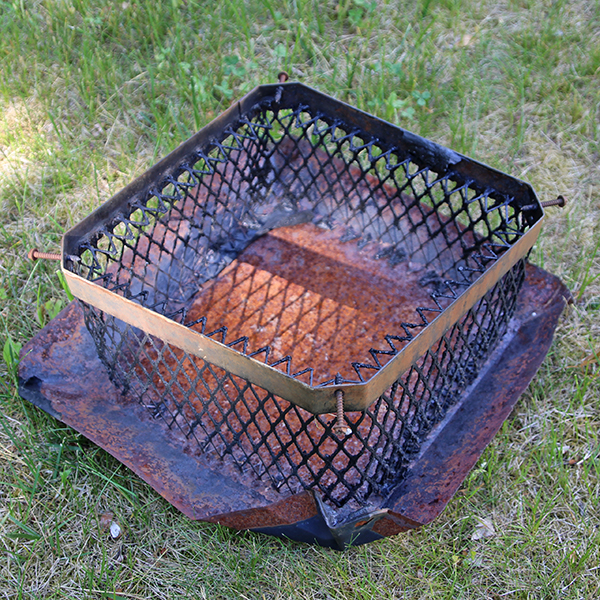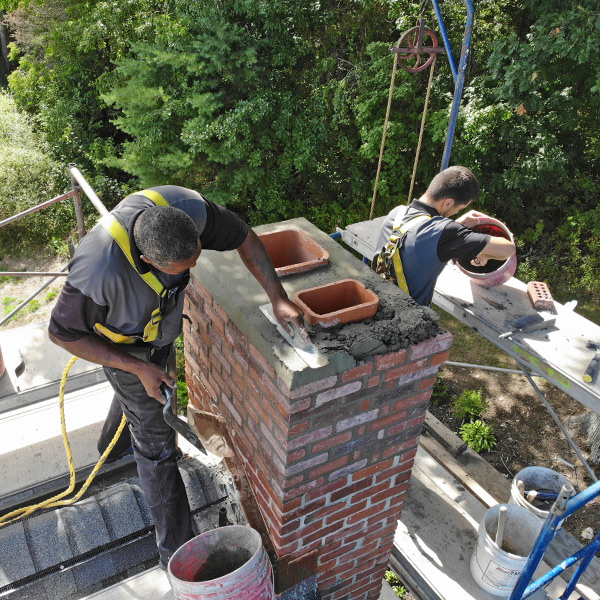Chimney Repairs You Need to Address Right Away
A structurally sound chimney is essential for keeping your home and family safe even when you’re not using the fireplace. However, here in the Greater Hartford region, we see our share of extreme weather conditions ranging from freezing rain, snow, and ice in the winter to hot and humid summers with strong storms that can damage the chimney. Here are five chimney repairs that need immediate attention.
 Damaged Chimney Cap
Damaged Chimney Cap
The chimney cap is a metal cover that protects the chimney from external elements like water, small animals, and debris. Since it is installed at the top of the chimney, it takes the brunt of severe weather conditions that can damage the cap or blow it off the roof entirely. When the chimney cap is damaged or missing, water will leak inside the flue and run down into the fireplace. It can cause severe damage to the interior masonry, chimney liner, damper, and firebox. Replacing a damaged chimney cap is inexpensive, but it can save thousands of dollars
in chimney repairs.
Worn Chimney Flashing
When the chimney flashing is worn or damaged, it requires immediate repair to prevent damage to the attic, roof, ceiling, and walls. The chimney flashing is sheet metal that seals the seam between the chimney and roof. When the flashing corrodes, rusts, warps, or is improperly installed, moisture can leak through the gap. A build-up of snow and ice in the winter can also weaken the flashing and surrounding masonry. Many homeowners are unaware that the chimney flashing is damaged until they notice water stains appearing on the walls and ceiling around the fireplace, often mistaking it for a roof leak. Your chimney professional should make necessary repairs as soon as possible to prevent further damage.
Cracked Chimney Liner
Since cracks in the chimney liner increase the risk of fire and exposure to toxic fumes, it is a type of chimney repair that needs immediate attention. Most chimneys are lined with clay tile to protect the masonry from high temperatures in a fireplace. Intense heat, creosote, and moisture can accelerate its normal wear and tear, potentially exposing nearby combustible materials to the high heat in the fireplace. The chimney liner should be repaired or relined to restore the integrity of the flue.
Chimney Crown Cracks

The cement chimney crown tops the entire masonry structure. Its sloped design helps deflect precipitation away from the chimney. Like all porous materials, the cement crown is susceptible to cracking, due to weather conditions, house settling, and age, allowing water to leak inside the chimney between the masonry and flue pipe. Chimney cracks will continue to worsen as absorbed moisture will freeze during the winter, further expanding the cracks. Minor cracking in the chimney crown can be easily repaired with a bonding material and waterproof sealant, but extensive damage may require a chimney crown rebuild.
Rusted Damper
The damper is a metal device that regulates airflow in the chimney. Moisture intrusion, usually due to a deteriorating or missing chimney cap or chase cover, can cause the damper to rust impeding its operation. A rusted damper may not close completely, reducing your home’s energy efficiency. A properly functioning damper is also essential for venting the smoke and fumes when using the fireplace.


